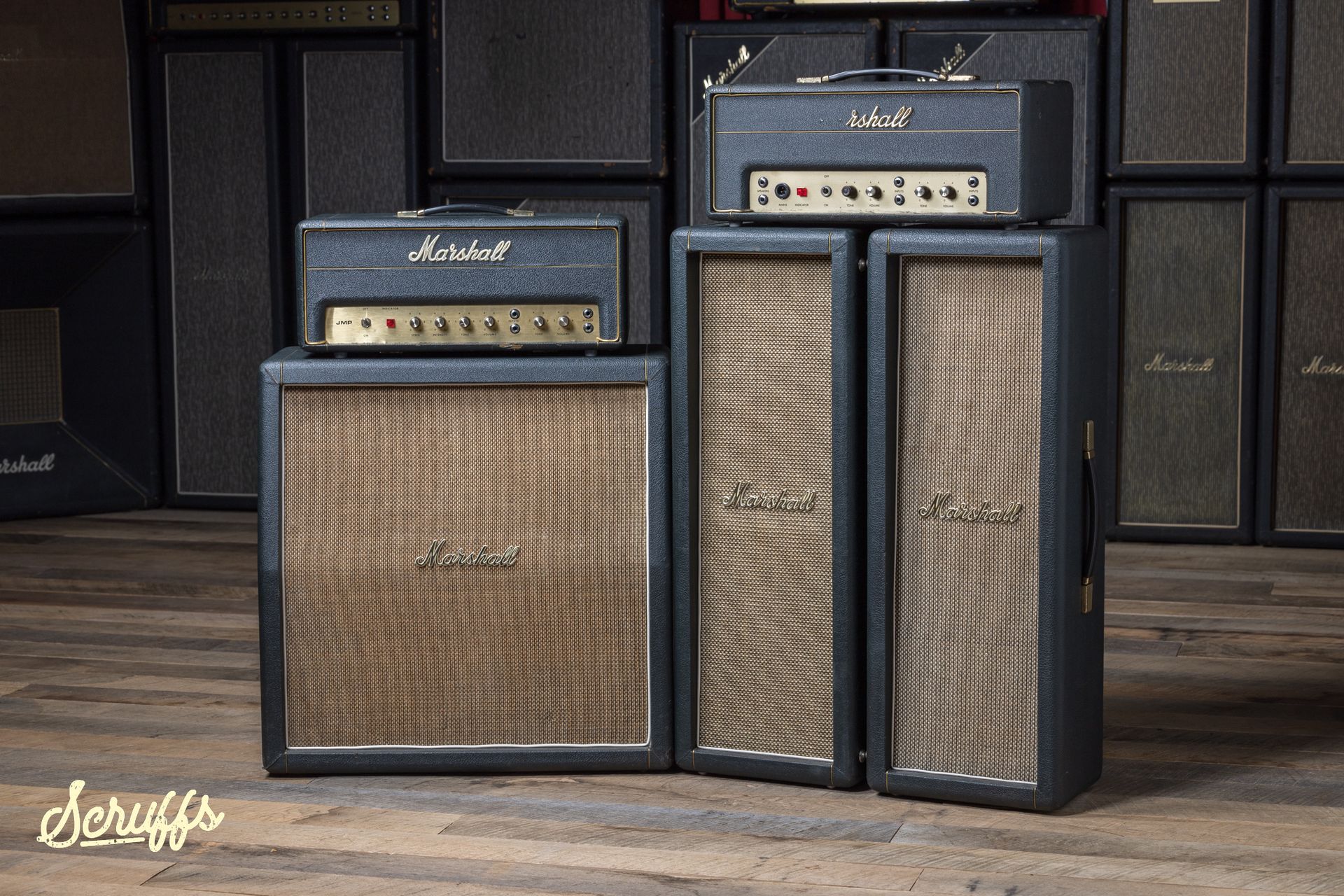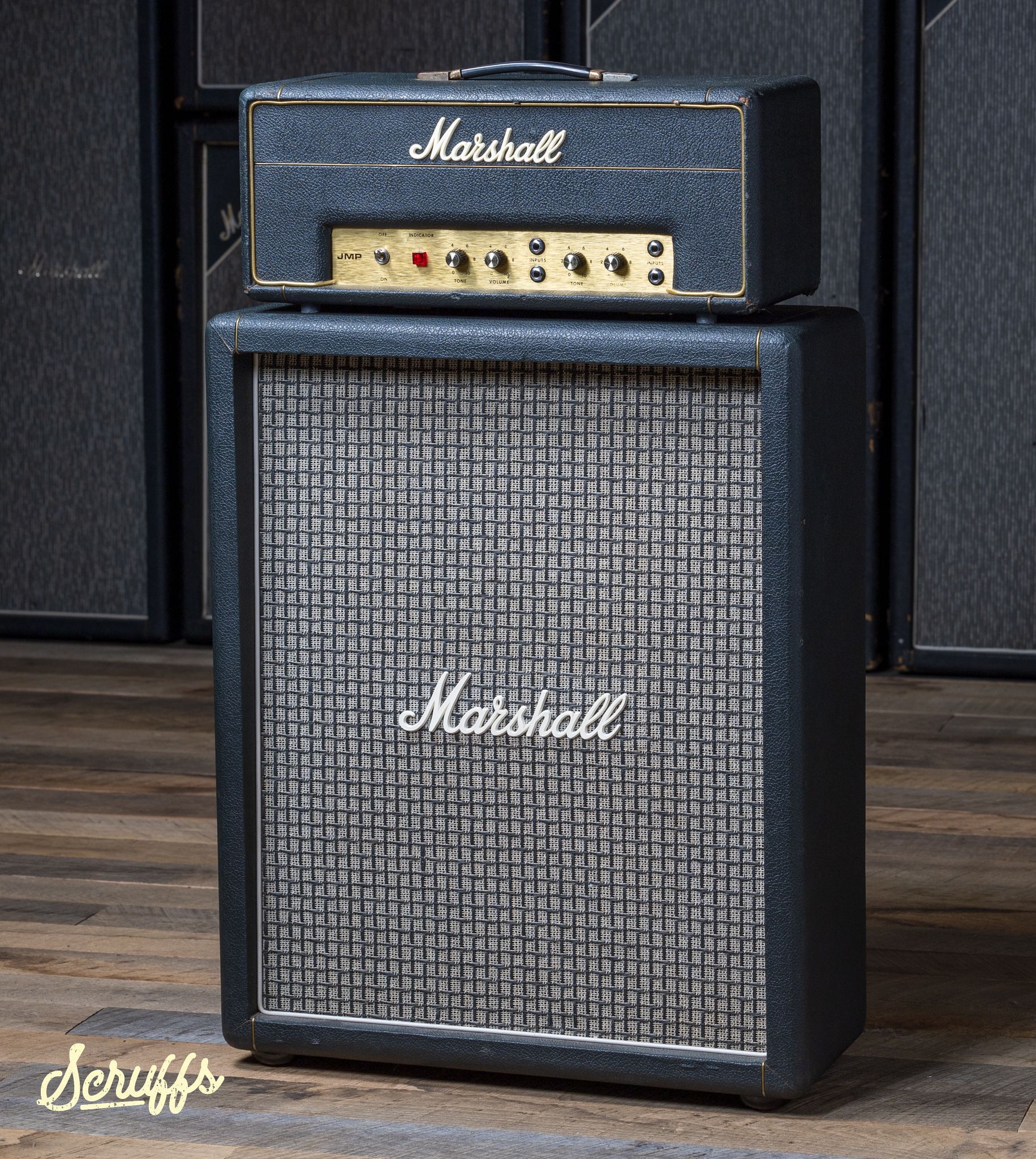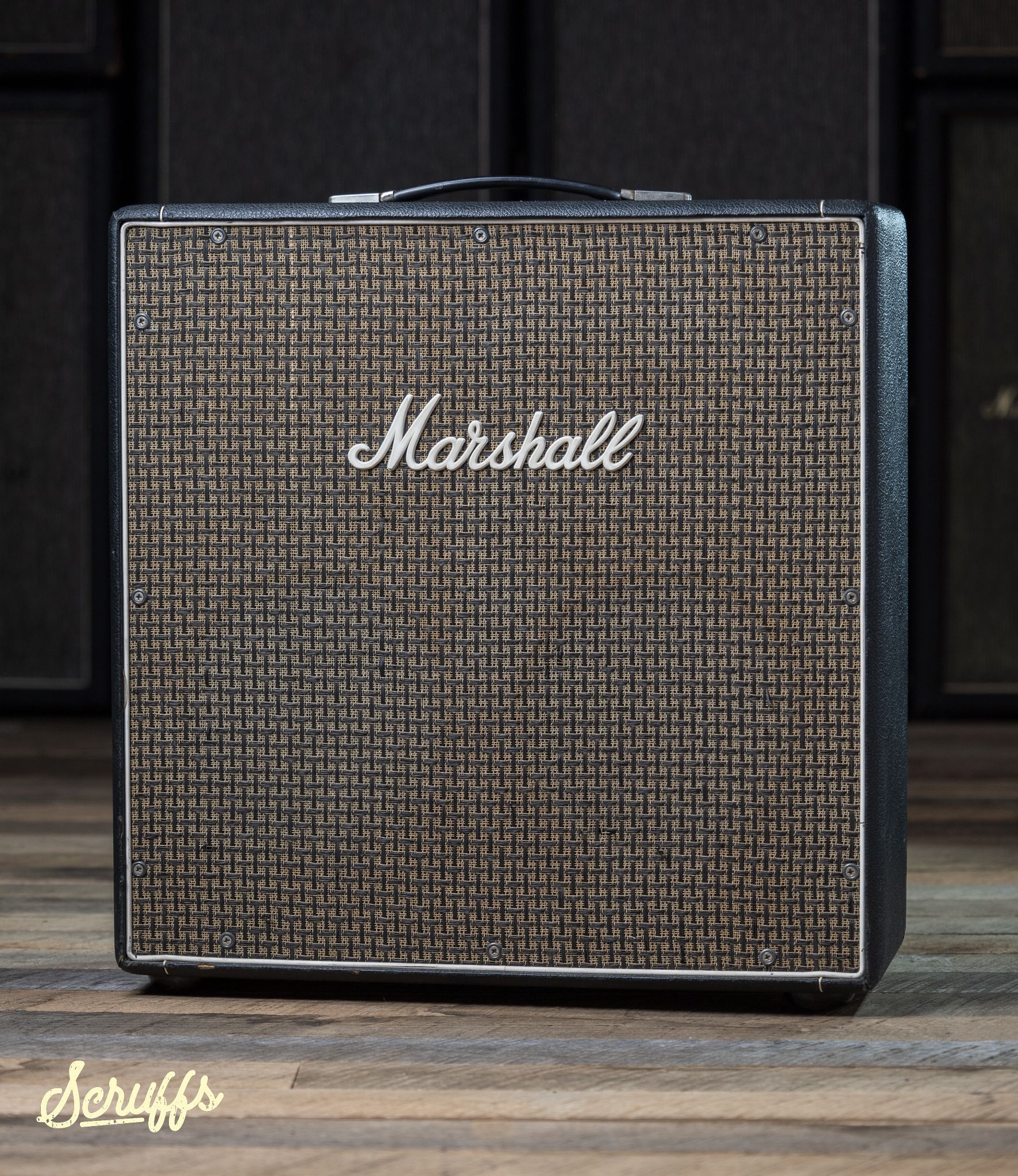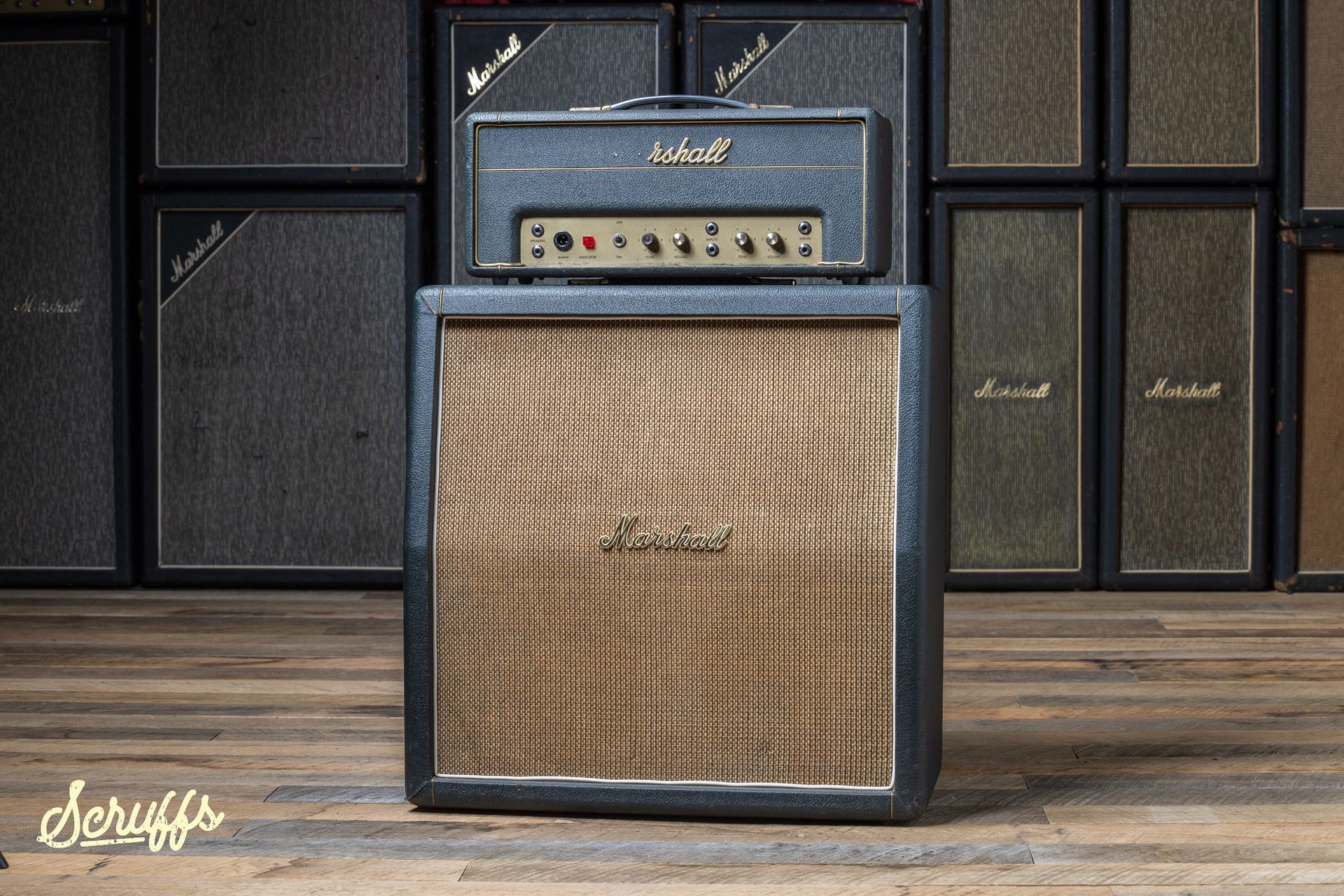Marshall: The 20-watt Series

In the late 1960s and early 1970s, a Marshall backline was the ubiquitous backdrop for most professional Rock bands. The Marshall “full stack” could be seen on stage with Jimi Hendrix, The Who, The Spencer Davis Group, Cream, Deep Purple, Black Sabbath and so on…. The 200-watt, 100-watt, 50-watt, and 18-watt models were expensive to manufacture and mainly used by professional musicians.
In 1967, Marshall had yet to become a household name. In an attempt to expand the brand, Marshall came up with a new model that would offer cost savings for the company and expand the consumer base. Also, Marshall's distributor, Rose Morris, pushed for the development of an amplifier that could compete with the smaller amps that Selmer, Vox, and Watkins were producing at the time. The resulting new model was dubbed the Model 1917.

Do you have a vintage Marshall you are interested in selling? Click here!
These smaller amps offered the Marshall look and sound in a stripped-down package. Instead of full Treble/Middle/Bass/ Presence tone stacks, they used a simple one-knob tone control. This allowed for the omission of one pre-amp tube that would drive the full tone stack in the 200/100/50-watt models. On the output side, the amp features a pair of lower power EL84 power tubes - instead of the more powerful EL34 tubes. The smaller power tubes allowed for smaller transformers. The power supply choke of the larger models was replaced by a much cheaper 10-watt resistor. The voltages inside the amp were lower as well, allowing for a simpler power supply filter cap arrangement.

As a result, these 20-watt amplifiers have a much smaller footprint, are lighter weight, and offer less power than their big brother. At the time of their initial run the lower power was most likely not the selling point, but a byproduct of the price point. This certainly has changed since then. As a lower volume became more desirable for both live performances and increased use in home studios, these amplifiers have become more and more popular. Because of this popularity, Marshall started reissuing the 20-Watt Lead and Bass model in the early 2000s.
Like the 100-watt and 50-watt models, the Marshall 20-Watt lineup included everything an aspiring band would need. There were multiple models available to choose from including the P.A. models (model 1917), Lead models (model 2022), Bass models (model 2019), and even a tremolo unit
(model T2022). It is important to note, unlike the higher-powered models, the 20 watters were sold as amp and speaker sets only. They were catalog order items and had to be purchased through the Rose Morris distributor.
20-watt Models
The available setups were as follows.
(Each speaker unit contained Celestion Speakers and included mains lead and waterproof cover.)
- “Model 1917 20-Watt P.A. (Public Address) Set-Up” included 2x10 P.A. speaker columns. The speaker columns were initially rated at 20-watts each. By 1971, the speakers were beefed up slightly to 25-watts power handling per column. Dimensions: Amplifier: Height 7.75”, Width 19”, Depth 8.25” Speaker cabinet: Height 33”, Width 12”, Depth 8.25

- “Model 2022 Lead Set-Up” included a slanted front 4x10 speaker cabinet rated at 40-watts initially, then increased to 50-watts. Dimensions: Amplifier: Height 7.75”, Width 19”, Depth 8.25”. Speaker cabinet: Height 25”, Width 25”, Depth 11.75
- “Model 2019 Bass Set-Up” utilized the same 4x10 cabinet as the Lead model; the only difference between the circuits of the Lead and Bass versions are a couple of coupling capacitor values in the preamp. This allows for lower frequencies in the latter. Dimensions: Amplifier: Height 7.75”, Width 19”, Depth 8.25”. Speaker cabinet: Height 25”, Width 25”, Depth 11.75.

- “Model 2061 Lead and Bass” appears to be much more common than the separately designated “Lead” and “Bass” models. In terms of historical documentation, it is somewhat mysterious. It never appeared in a Marshall catalog, and the matching 1x12 ported speaker cabinet (Model 1973) obviously does not share the model number of the head, as is the case with the other models. Furthermore, model number “1973” was also used on an earlier 18-Watt 2x12 combo amp. It is likely that the “Lead and Bass” replaced the separate “Lead” and “Bass” models, but again, historical data on this is not entirely clear. Dimensions: Amplifier: Height 7.75”, Width 19”, Depth 8.25”. Speaker cabinet: Height 25”, Width 25”, Depth 11.75.


- “Model 2061 Lead and Bass Combo Unit” features two 10” Celestion speakers, smooth early 70’s Tolex, front screw mounted baffle, and white piping with a close patterned checkerboard grill cloth. Dimensions: Height 24.5” (with dome feet), Width 24”, Depth 9”. This combo version of the 20 Watt Lead and Bass is excedingly rare and not mentioned in any Marshall literature or catalog.
The circuit of the 20-watt Marshalls did not change throughout the models’ initial run from 1967 to 1973. There were minor component differences between the different iterations, to accommodate the different intended applications, but the basic voice is the same. It is distinctly Marshall.
Like the rest of Marshall’s product line, there were cosmetic changes. The first models had all connections on the front panel, including the speaker and AC connectors. The control panels were gold “plexiglass” at first, then transitioned to brushed, gold anodized aluminum in 1969.
Until approximately 1972 the power cords were detachable with a “Bulgin” connector. The earliest models used smaller Bulgin connectors that are now very hard to find. Marshall then transitioned to a fixed, permanently attached power cord. Around the same time, the external mains fused was moved to the inside of the chassis. Interestingly, the back panels still have the main fuse location printed on them, although the fuse itself is no longer there.

All 20-watt models were selectable for international primary voltages from 110V to 240V at either 50 or 60Hz. This change was initially accomplished by moving a jumper wire on an internal terminal strip. A voltage selector was later introduced on the back of the amplifier. Finally, that selector moved to the top of the chassis close to the power transformer.
An interesting aspect of vintage European amplifiers such as Marshalls are the physical size of the power transformers; they are the same for all international voltage applications. A transformer works more efficiently at a higher primary AC
frequency. For that reason, vintage Fender “export” models with selectable primary voltage had a physically bigger transformer core. This was done to compensate for the less efficient 50Hz AC in Europe. Fender wanted their amplifers to sound the same on either side of the pond. Marshall didn’t do that, and as a result, their vintage amps tend to sound a bit louder and brighter in the US than in their country of origin. The difference isn’t huge, but many touring musicians who traveled with their amplifers noticed it.
As for the speaker impedance, there was a selector switch located inside the back panel on chassis. Remember, these were sold as matching sets only, so they came prewired to match. Thankfully, the output transformers have taps for 4, 8, and 16 Ohm.The leads to the output jacks must be soldered to different terminals on the transformer to select a different speaker load.
In conclusion, the 20-watt Marshall amplifiers not only deliver that iconic Marshall tone but also offer a practical solution for musicians seeking more manageable volume levels. Their reduced sound pressure level makes them a studio-friendly choice, enhancing their appeal for recording enthusiasts. With the prices and desirability of these original 20-watt models on the rise in recent years, it's clear that these amplifiers have earned their place as coveted classics among musicians and collectors alike. Whether you're a seasoned player or a studio enthusiast, the 20-watt Marshalls remain a timeless choice for achieving that unmistakable Marshall sound without the overwhelming volume.
If you're interested in acquiring a vintage Marshall amplifier of any size, please don't hesitate to get in touch with us.
Do you have a vintage Marshall you are interested in selling? Click here!






